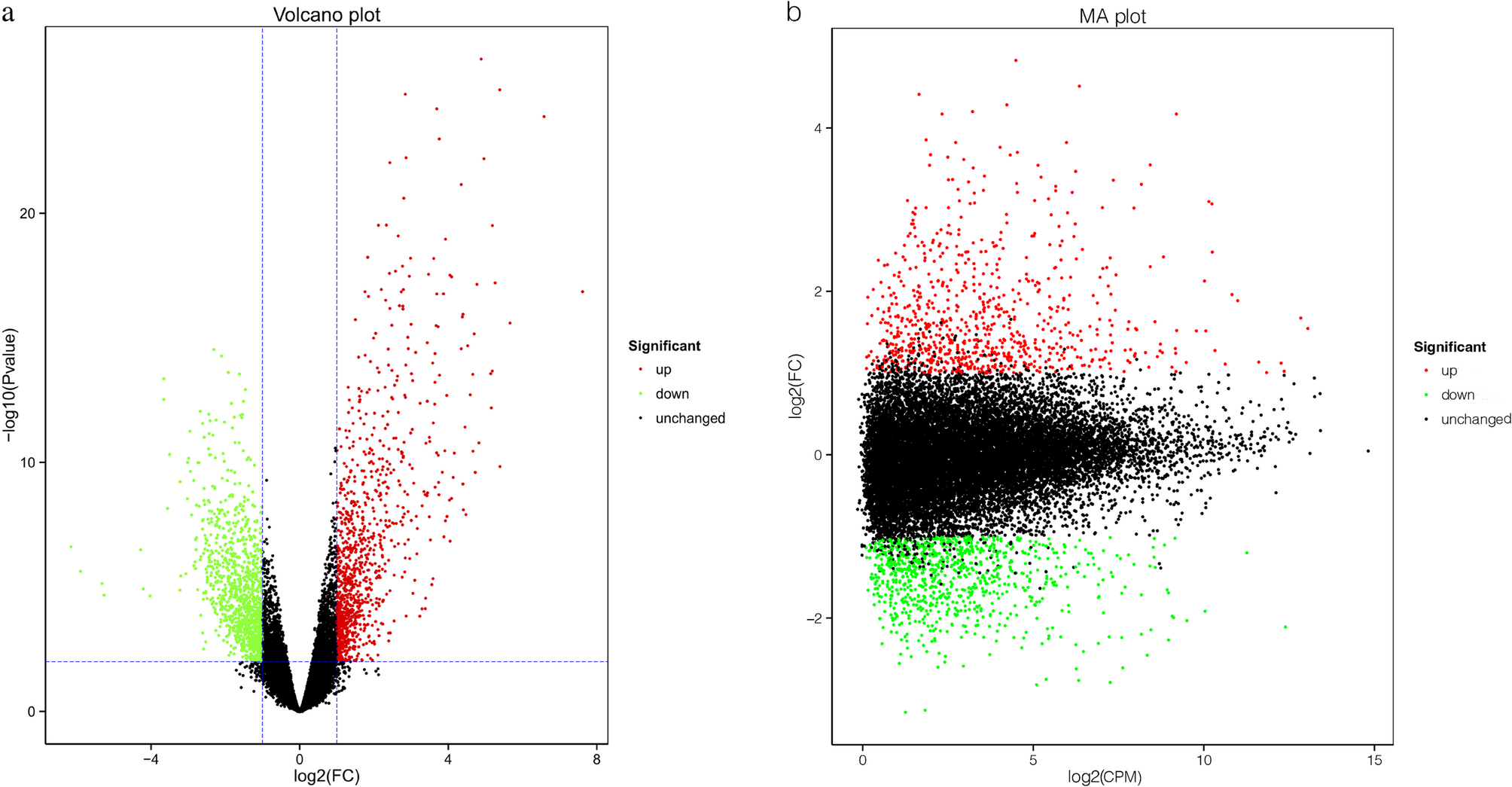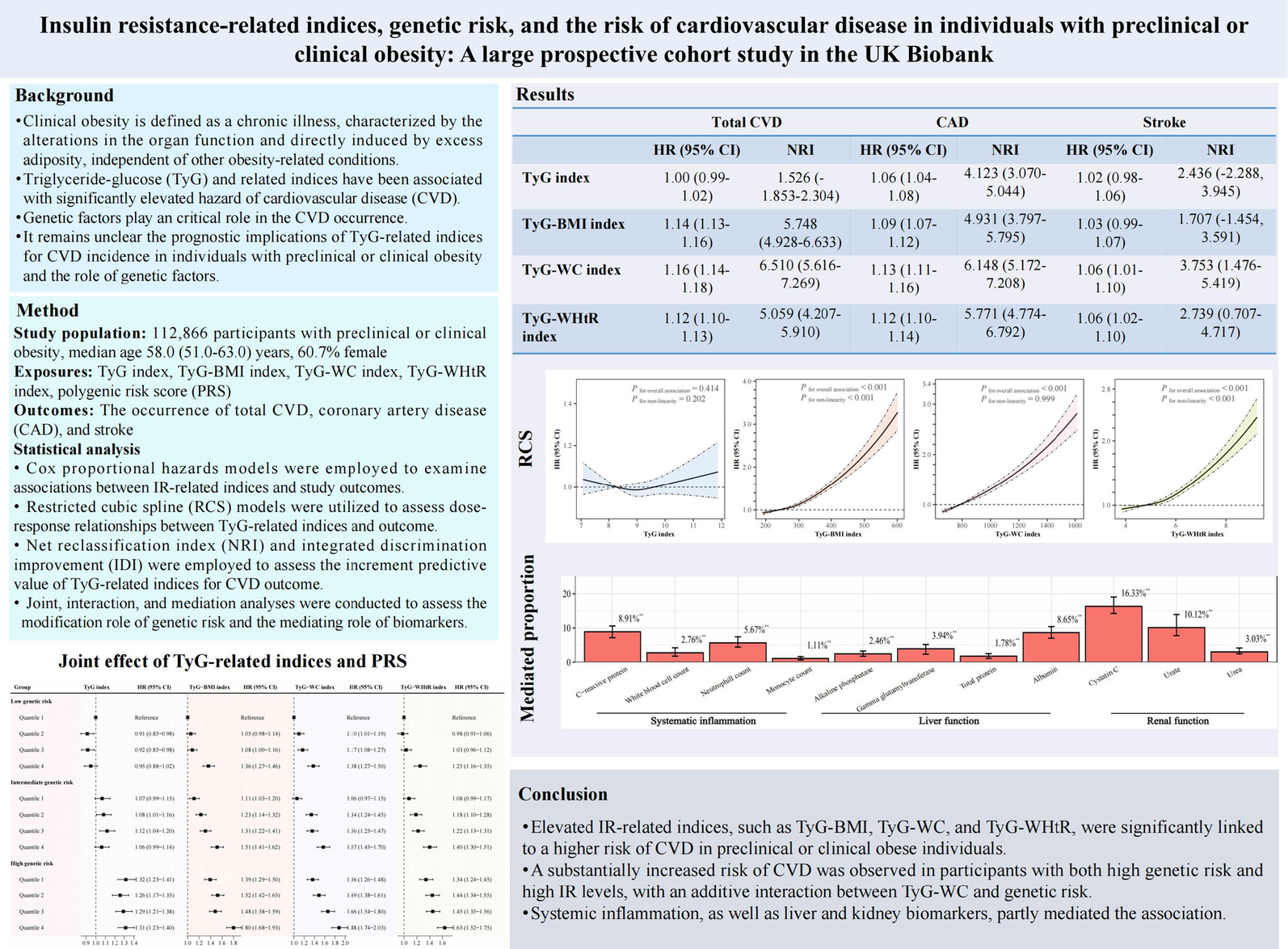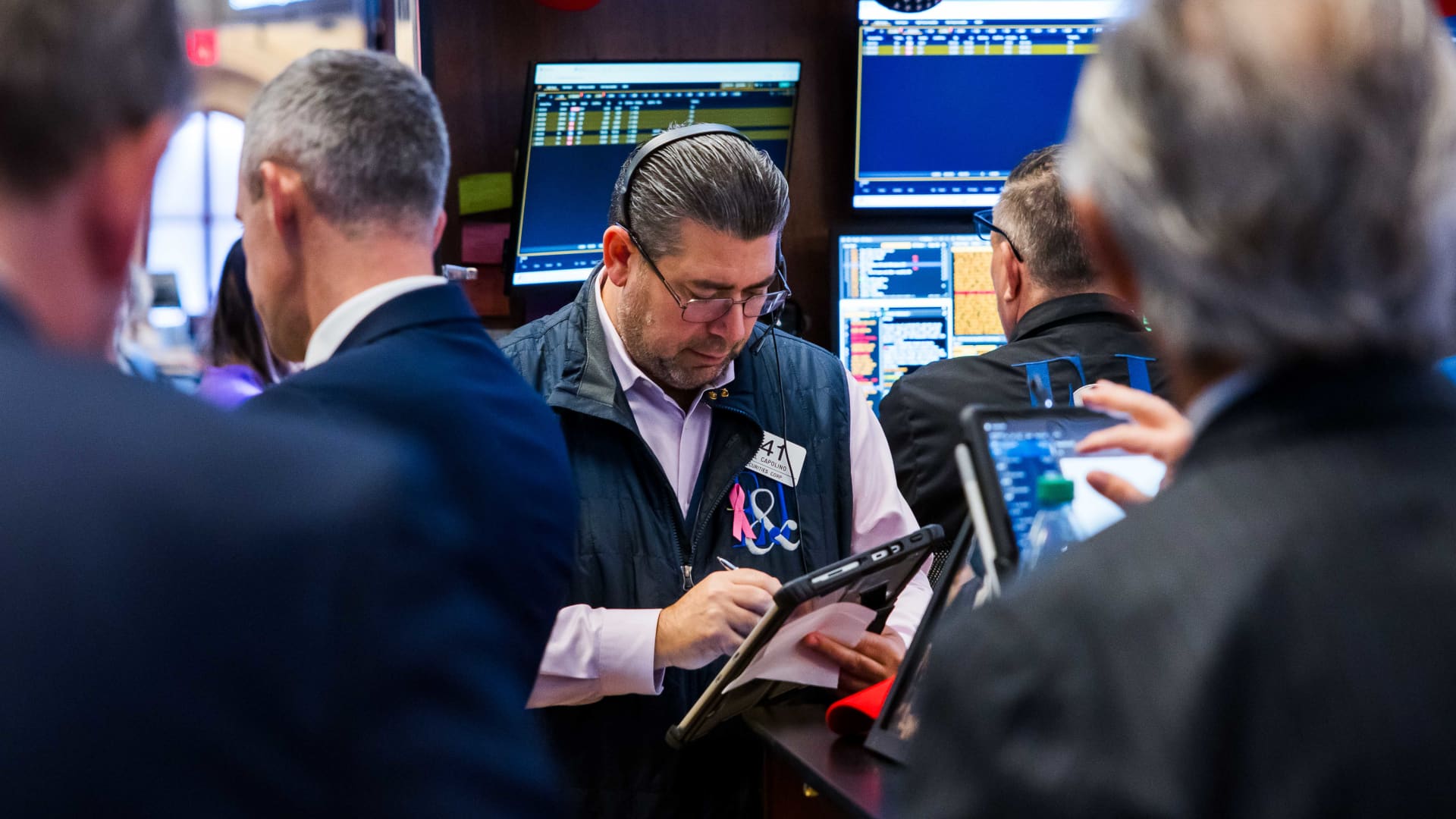The most gifted runners not only go faster and with a smoother gait. They also need less recovery time. The phase of the current bull market that pushed off the blocks six months ago is proving elite at refreshing itself with the briefest of respites before continuing forward to the next mile marker. The S & P 500 fell a maximum of 2.98% using intraday prices, nearly all of that in one day on Oct. 10, after President Donald Trump rhetorically re-escalated the U.S-China trade confrontation. The index then spent the next nine trading days inside that single-day range until it broke to a fresh high this past Friday, briefly surpassing 6,800, after an unthreatening CPI report removed one possible impediment to the two more Federal Reserve rate cuts expected by year’s end. The main reason the CPI report released the indexes higher is that it simply passed, making Big Tech earnings next week the next known swing factor and allowing the old favorites of the AI trade to reassert leadership. .SPX 3M mountain S & P 500, 3 months This column last week suggested that “an ideal scenario for the remainder of the year would have the recent choppiness last a bit longer to qualify as a proper scare, skimming the froth off the speculative stuff and resetting expectations in a way that rebuilds investors’ capacity to be surprised to the upside.” As of now, it appears no genuine scare was needed, unless we count the couple of days last week when gold, crowded momentum plays and unserious meme stocks were liquidated in a slightly sloppy but ultimately benign rotation. Evercore ISI equity strategist Julian Emanuel makes the case that the manic surge-and-swoon act in gold and connected high-velocity speculative stuff need not dictate the broader market path: “As was the case in early 2021 when the peak in meme stocks, SPACs and profitless tech created brief instability in markets generally, gold’s selloff has been accompanied by selloffs in other speculative themes from quantum computing to lithium to uranium. Yet as it was in 2021, where the S & P 500 rallied an additional 23% from the meme-stock fizzle to the capital markets fueled peak a year later, rumors of speculation’s demise in 2025 are greatly exaggerated.” This is well-observed, though the obliteration of the frothiest market themes from their early 2021 peak was far more damaging than anything seen so far this month. Tireless retail buying And anything resembling the demise of the speculative fervor is hard to locate. Citadel Securities equity trading-flow guru Scott Rubner on Friday extolled the persistent aggression in somewhat valuation-insensitive small-investor activity, noting that 22% of trading volume now comes from retail accounts – the most since (yup) February 2021 – and retail has been a net buyer of stocks 23 of the past 27 weeks. And, truly, what would deter such excitable, tireless buying among non-professionals when AI hype is being invoked by so many adjacent industries and marginal companies, when Robinhood is blurring the line between investing and gambling with sports-prediction contracts in their app, when whole subsectors (rare minerals, quantum computing) get pumped to the stratosphere on the mere hint of the Trump administration possibly taking a stake, in a dynamic I call “too rigged to fail?” Yet for all the fun and games, the genuine fundament of corporate value – real profits – are coming through nicely to substantiate generally elevated valuations. Companies so far are beating forecasts at around an 80% rate, better than the norm. Stocks aren’t universally being rewarded for it, but it moves the chains on forward earnings-growth forecasts. Of course, total S & P 500 earnings for 2025 are now looking as if they’ll come in below where consensus pegged them at the start of the year. On Dec. 31, the full-year estimate was $274, which fell to $264 by July and is now up to $268. That’s a 2% decline over a ten-month stretch in which the S & P 500 index is up 15.5%. So, yes, the market is more expensive now, but there’s always next year. Consensus for 2026 is tracking above $304, which is now becoming the denominator for all investor valuation assumptions and return projections. This is what bull markets do, they roll forward their optimism until forced to rethink it. Was the little wobble in popular momentum stocks enough to soften up expectations to receive good news on tech results with enthusiasm? John Flood, Head of Americas Equities Sales Trading at Goldman Sachs, says yes, in a trading-desk note: “This week’s painful drawdown in momentum…has only added to the already significant wall of worry out there. As a result, the sentiment/positioning setup into the heart of mega-cap tech earnings is the friendliest I have seen in quite some time. If no foot faults from MAGMA (Microsoft, Amazon, Google, Meta, Apple) next week (we are not expecting any) I am bracing for another leg higher at the index level led by super-cap tech.” Year-end upside again? Just a few reasons it’s tough for bears to find a meal in a year like this, especially as we get deeper into the fall. Everyone knows most years have an upward bias in the final two months of the year, even more so when the first ten months have been strong. Granted it’s hard to make a specific case for why this year will fall into the 20% of instances when year-end seasonality failed, yet it’s worth noting that the seasonal signals have been glitchy this year. We were supposed to be up handily into April, but the S & P had a 15% year-to-date drawdown by April 8. The chart below, from Renaissance Macro Research, plots the forward-three-month S & P 500 return for each date, based on decades of market history. Last week we hit what’s supposed to be the best entry point for three-month-forward gains. But note that almost exactly three months ago was meant to be the worst moment to buy (in late July) and since then the index is up 6%. Two weeks ago, the president’s social-media growling about higher China tariffs exposed a node of complacency among investors, who as a group had turned their focus away from the trade-policy flux. Rationally so, in a sense, given the incentives all around to be sure that things settle into a manageable arrangement. Alongside a few corporate-credit hiccups and overbought speculative sectors, the risk-off reaction briefly overwhelmed the market’s usual capacity to absorb shocks through rotation. If forced to identify another node of complacency it might be investors’ comfort level with the underlying sturdiness of the economy. The conventional wisdom sees meager job growth as largely a result of immigration restrictions and demographics, disconnected from still-healthy GDP-tracking models that capture urgent capex levels and free spending by the affluent. It’s a plausible and defensible stance. And it’s true that overall (unofficial) consumption data and corporate commentary are not raising any alarms. Still, the market is no longer sending as emphatic a message about the pace of growth as it was several weeks ago, even. Equal-weighted consumer discretionary stocks are no longer outperforming. Industrials are better but have stalled on a relative basis. Veteran strategist Jim Paulsen of Paulsen Perspectives says, “A good proxy for U.S. economic surprises may be the relative performance of S & P cyclical sectors. Cyclicals have continued underperforming badly since Oct 1!” Warren Pies, founder of 3Fourteen Research, points out, “During this October wobble, homebuilders and other key cyclical areas of the market have lagged. Simultaneously, the AI trade has powered higher. Against the backdrop of falling yields, these intra-market moves point to nascent growth concerns.” Accumulated anecdotes could include an uptick in corporate layoff news, weak S & P PMI manufacturing sentiment, mortgage-application volumes not responding much to lower rates. There’s a good chance the market is cushioned against a growth scare by AI, by the Fed’s dovish turn and by the projected stimulative effects of the new tax law fattening tax refunds early next year. And maybe no news can remain good news for now in the absence of government data, and then perhaps the Street will give the data a Mulligan once it comes given the shutdown distortions. This low-volatility ascent since April quite resembles the imperturbable rally through all of 2017. That run required a steep acceleration higher into January 2018 accompanied by euphoric investor expectations for policy-driven growth, reaching serious excesses well beyond present conditions before breaking hard into a flash correction. None of this is enough to withhold the benefit of the doubt from the bulls for now, of course. But such issues can serve as a study guide for when the tape goes in search of an excuse to administer its next test.
Blog
-
Huawei has a new ‘purple color’ Ultimate Design smartwatch – Huawei Central
- Huawei has a new ‘purple color’ Ultimate Design smartwatch Huawei Central
- Experts say Huawei’s new smartwatch is a ‘great deal’ compared to Apple Watch Ultra Daily Record
- HUAWEI WATCH Ultimate 2 is Now Available in the Philippines
Continue Reading
-
COAS Munir, Egypt’s Sisi stress coordination on matters of mutual strategic interest – Dawn
- COAS Munir, Egypt’s Sisi stress coordination on matters of mutual strategic interest Dawn
- Pakistan army chief visits Egypt to enhance military, defense cooperation Arab News
- COAS for stopping extremist ideologies The Express Tribune
- Field…
Continue Reading
-

Full-length transcriptome analysis of papillary thyroid carcinoma reveals correlation between LAMB3 expression and clinical features | BMC Cancer
Patients
Each study participant voluntarily provided informed consent. The criteria for inclusion were as follows: (i) 18 to 80 years of age with positive diagnosis of PTC using paraffin-embedded biopsy samples; (ii) no prior thyroidectomy; (iii)…
Continue Reading
-

Insulin resistance-related indices, genetic risk, and the risk of cardiovascular disease in individuals with preclinical or clinical obesity: a large prospective cohort study in the UK biobank | Cardiovascular Diabetology
Mensah GA, Fuster V, Murray CJL, Roth GA. Global burden of cardiovascular diseases and risks, 1990–2022. J Am Coll Cardiol. 2023;82(25):2350–473.
Google Scholar
…Continue Reading
-

Retinal Biomarkers Track Multiple Sclerosis Severity
A recent large-scale study has revealed new insights into the structural changes of the retina in multiple sclerosis (MS) patients, highlighting potential biomarkers for disease monitoring and severity assessment. Researchers analyzed optical…
Continue Reading
-
From Chinese Workshops to Global Living Rooms: Chinese robot vacuum cleaners gain popularity-Xinhua
Customers visit a Roborock store at a shopping mall in Seoul, South Korea, Oct. 12, 2025. (Xinhua/Yao Qilin) BEIJING, Oct. 25 (Xinhua) — At a large shopping mall in Seoul, South Korea, a Chinese brand’s robot vacuum cleaner attracted bustling crowds. A Roborock robot vacuum cleaner, equipped with a robotic arm, precisely picked up a sock, rotated, and threw it into a box, drawing cheers from the audience.
According to data from a U.S. research firm, Roborock holds over 50 percent market share in South Korea’s robot vacuum cleaner market, firmly securing the top position, with a dominance market share exceeding 70 percent in the high-end market.
People watch the demonstration of a robot vacuum cleaner at a shopping mall in Seoul, South Korea, Oct. 12, 2025.(Xinhua/Yao Qilin) A costumer uses a robot vacuum cleaner at his home in Seoul, South Korea, Oct. 13, 2025. (Xinhua/Yao Qilin) People walk by a billboard of Roborock at a subway station in Seoul, South Korea, Oct. 13, 2025. (Xinhua/Yao Qilin) Customers visit a Roborock store at a shopping mall in Seoul, South Korea, Oct. 12, 2025. (Xinhua/Yao Qilin) A costumer uses a robot vacuum cleaner at his home in Seoul, South Korea, Oct. 13, 2025. (Xinhua/Yao Qilin) Beyond South Korea, Roborock is rapidly expanding across other Asia-Pacific markets. In Japan, during a promotion on Amazon Japan, several Roborock products ranked among the most popular robot vacuum cleaners. In Australia, its products also made it into the top ten best-selling robot vacuum cleaner list.
This photo taken on Oct. 16, 2025 shows an advertisement of Roborock at a home appliance store in Tokyo, Japan. (Xinhua/Jia Haocheng) This photo taken on Oct. 16, 2025 shows advertisements of Roborock at a home appliance store in Tokyo, Japan. (Xinhua/Jia Haocheng) This photo taken on Oct. 19, 2025 shows billboards of Roborock at Sydney Airport in Sydney, Australia.(Roborock/Handout via Xinhua) A shop assistant introduces Chinese brand robot vacuum cleaners to a customer at a home appliance store in downtown Sydney, Australia, Oct. 13, 2025. (Xinhua/Ma Ping) Over 2,000 kilometers away from South Korea, in Huizhou City of south China’s Guangdong Province, Roborock’s smart manufacturing facility operates at high efficiency, with robot vacuum cleaners continuously distributed worldwide.
From workshops in China to living rooms across Asia-Pacific, Chinese brands for robot vacuum cleaners have gained popularity among foreign customers.
A staff member searches for information at a warehouse of Roborock in Huizhou, south China’s Guangdong Province, Oct. 10, 2025. (Xinhua/Deng Hua) A staff member transports robot vacuum cleaner products in Huizhou, south China’s Guangdong Province, Oct. 10, 2025. (Xinhua/Deng Hua) A staff member works at a workshop of Roborock in Huizhou, south China’s Guangdong Province, Oct. 10, 2025.(Xinhua/Deng Hua) Staff members work on a robot vacuum cleaner assembly line at a workshop of Roborock in Huizhou, south China’s Guangdong Province, Oct. 10, 2025. (Xinhua/Deng Hua) An aerial drone photo taken on Oct. 10, 2025 shows logistics trucks waiting for loading and delivery at a Roborock facility in Huizhou, south China’s Guangdong Province.(Xinhua/Deng Hua)■ Continue Reading
-

Scientists Invented an Entirely New Way to Refrigerate : ScienceAlert
Say hello to ionocaloric cooling. It’s a new way to lower temperatures with the potential to replace existing methods of chilling things with a process that is safer and better for the planet.
Typical refrigeration systems transport heat away…
Continue Reading
-

Evaluating Valuation as Export Curbs and NASA Wins Shape Investor Sentiment
Intuitive Machines (LUNR) has drawn fresh attention as investors weigh the impact of new US export curbs on tech to China. At the same time, the company is advancing its IM-3 lunar mission and securing NASA contracts.
See our latest analysis for Intuitive Machines.
Intuitive Machines stock has whipped through a period of volatility, recently clawing back gains with a 28% share price return over the past month despite ongoing US-China export tensions and scrutiny following past missions. Although year-to-date share price return remains in negative territory, the strong one-year total shareholder return of 60% suggests that long-term momentum is still firmly alive for patient investors.
If space tech’s recent rally has sparked your curiosity, you can see what’s happening across the entire sector with our aerospace and defense discovery screener using the following link: See the full list for free.
Given its recent contract wins, strong analyst sentiment, and a price still about 20 percent below consensus targets, are investors overlooking an undervalued space innovator? Or is future growth already built into the current share price?
With Intuitive Machines closing at $12.81 and the most widely followed narrative placing fair value at $15.43, this perspective sets a higher bar than the current market price. This hints at room for re-rating if assumptions hold.
Strategic vertical integration of satellite and lander manufacturing, along with proprietary advancements from the KinetX acquisition, enhances cost efficiencies, IP control, and technological differentiation. These factors support higher net margins and competitive pricing power as the company scales recurrent service contracts across civil, defense, and commercial markets.
Read the complete narrative.
Want to see what assumptions drive this bullish view? The narrative’s fair value hinges on powerful expansion bets, bold profit transformation, and sky-high valuation multiples rarely seen outside tech’s heavyweights. Curious which projections could justify such optimism? Discover the numbers on the next page.
Result: Fair Value of $15.43 (UNDERVALUED)
Have a read of the narrative in full and understand what’s behind the forecasts.
However, persistent losses and heavy reliance on large government contracts could quickly dampen the bullish outlook if execution or funding falls short.
Find out about the key risks to this Intuitive Machines narrative.
While Intuitive Machines looks attractive when compared to its fair value estimate, a look at its price-to-sales ratio tells a different story. The company is trading at 6.7 times its sales, which is much higher than the US Aerospace & Defense industry average of 3.2 and the peer average of 2.7. The market’s fair ratio, based on regression analysis, stands at just 1.4 times sales. This large gap suggests considerable valuation risk if the company fails to maintain its growth edge. Which view should investors trust?
Continue Reading
-

Eni (BIT:ENI) Margin Decline Reinforces Concerns Over Premium Valuation and Slower Earnings Growth
Eni (BIT:ENI) reported earnings growth of 4% per year and revenue growth of 3.8% per year, both trailing the broader Italian market’s expectations of 9.7% earnings and 5% revenue growth. The company’s net profit margin shrank to 2.6% from 4.1% a year earlier. With profitability improving over the last five years and high-quality earnings, investors are weighing the premium Price-To-Earnings Ratio of 21.1x (above industry and peer averages) against a market price that still sits below the discounted cash flow fair value.
See our full analysis for Eni.
Next, we will see how these headline figures stack up against the prevailing narratives that investors follow—and where the data might surprise.
See what the community is saying about Eni
BIT:ENI Earnings & Revenue History as at Oct 2025 -
Analysts forecast that Eni’s profit margin will rise from 2.6% today to 5.8% in three years, even as revenue is projected to decrease by 0.7% per year over the same period.
-
According to the analysts’ consensus view, margin expansion is supported by:
-
Growth in higher-margin businesses like biorefining and sustainable mobility, with new biorefinery projects and partnerships fueling expanded revenue streams and better return on equity.
-
Strategic LNG expansion and diversification, specifically new projects in Africa and Asia, add resilience to earnings and help offset declining revenue in legacy operations.
-
-
Strong margin outlook could underpin future shareholder returns. See how the consensus narrative interprets this shift in direction. 📊 Read the full Eni Consensus Narrative.
-
Persistent losses in Eni’s Versalis (chemicals and downstream) division, with management noting a “lack of meaningful economic recovery” in this European sector, continue to drag on group earnings and introduce ongoing margin pressure.
-
Analysts’ consensus view notes two main risk areas:
-
Legacy businesses like Versalis generate negative free cash flow, and expected only “slight improvement” in margin outlook, raising concerns about lasting drag on net profits.
-
Eni’s upstream expansion in regions such as Africa and Argentina boosts production potential but increases exposure to regulatory and expropriation risks, which could disrupt future revenue streams or lead to asset losses.
-
-
Eni trades at a Price-To-Earnings Ratio of 21.1x, far above the industry and peer averages (14.5x and 14.7x). Yet its share price of €15.84 remains below both consensus analyst target (€15.75) and DCF fair value (€19.76).
-
Analysts’ consensus view underlines:
-
The small 2.9% difference between the current share price and the €15.75 consensus target suggests limited immediate upside. This implies the stock is close to being fairly priced in the eyes of most analysts.
-
Holding a valuation premium may weigh on sentiment if Eni’s forecasted growth continues to lag the broader Italian market. However, the DCF fair value offers longer-term support for investors who see further profitability gains.
-
Continue Reading
-
